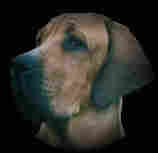|
|
|
|
|
|
|
|
|
The history of the Fila Brasileiro
The Fila's history is so closely linked with Brazilian history that, for a proper perspective, we shall mention the various periods in which the Fila played a very important role. It is not only linked to history, but to the way of life and daily problems of the first colonists in Brazil. Most of the modern breeds have been "manmade". The Fila Brasileiro is an exception. It just "happened" as a result of mere necessity; colonists needed a strong, sturdy, and hard-working dog that would be, simultaneously, a good cattle driver, a good jaguar hunter, a good guard dog, and a loyal companion. This is the Fila Brasileiro. Courage, character and loyalty have always been his main characteristics through the centuries. There are some basic breeds that contributed to the development of the Fila Brasileiro. Though every cynologist agrees that three basic breeds contributed to the development of the Fila Brasileiro (the Engelsen Doggen or ancient Bulldogs, Mastiffs and Bloodhounds) some facts give way to another theory based solely on historical documents. After Brazil's discovery in 1500, Portuguese colonists came to Brazil bringing everything they owned, including their dogs. From the Azores Islands came the Fila Terceirense, a herder that had nothing in common with the Fila Brasileiro, except for its name. Even so, the possibility of a relationship cannot be discarded since there is no evidence of any other dogs in the colonies except for those brought by the invaders, and wild dogs. It is said that so many dogs left the Azores Islands that the Fila Terceirense became extinct. Some felt that the name "FILA" came from the Portuguese dog Fila Terceirense; but it is also pointed out that "FILA" means "TO HOLD" in the ancient Portuguese language, and this was the main function of the Fila Brasileiro to hold (filar) runaway slaves. From the ancient fighting dogs (the Engelsen Doggen or ancient Bulldogs) they acquired their aggressive temperament, as well as, being some what stubborn, the colors, the typical rose-ear, higher hind legs, and a higher croup than the withers, plus persistence. From the Mastiff they inherited the large heavy head, strong maxilars, short neck, the substance, the slightly curved croup, moderated tail set, the courage, the black mask, and also the Mastiff 's basic colors. From the Bloodhound the Fila received the abundant loose skin, the pronounced occipital peak, pendulous lips, hanging flews and dewlaps, the moderated tuck up, the fabulous scent, and the way of barking in a crescendo tune. Maybe the Fila Terceirense left the legacy of the "crooked tail" and the ability of cattle herding, but it is hard to tell how much influence the Portuguese herders could have had. There is even a possibility of some influence from the most usual breeds found in each region; but even this would be a very low percentage not worth mentioning. The origin of the Fila Brasileiro is still very obscure; but it is generally believed that it is the result of crossing English Mastiffs, Bloodhounds, ancient Bulldogs (called Doggen Engelsen), Fila Terceirense, as well as many others influencing the Fila Brasileiro breed.
|
|
|



